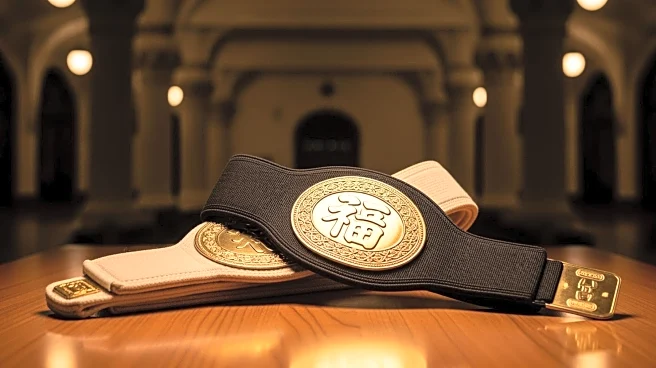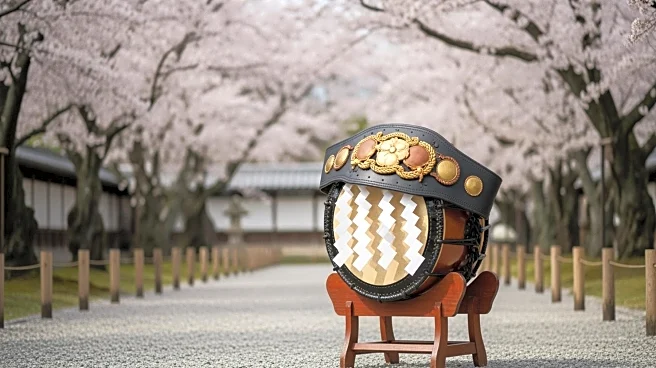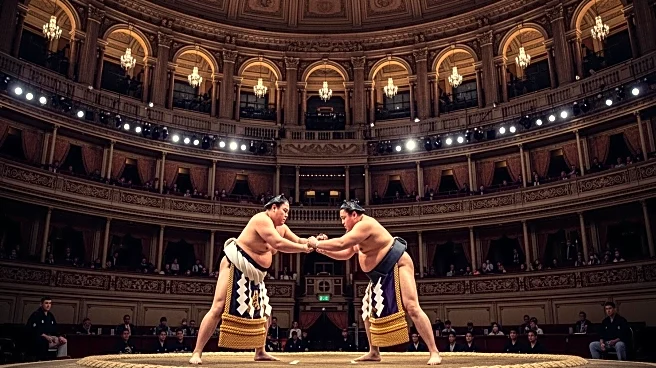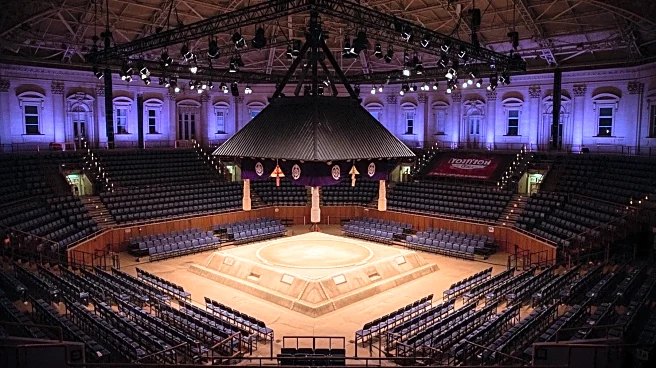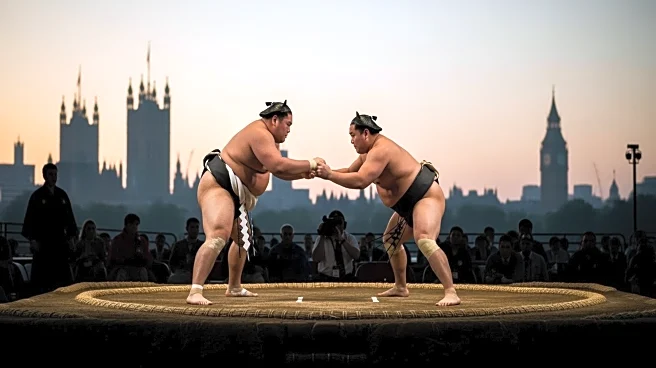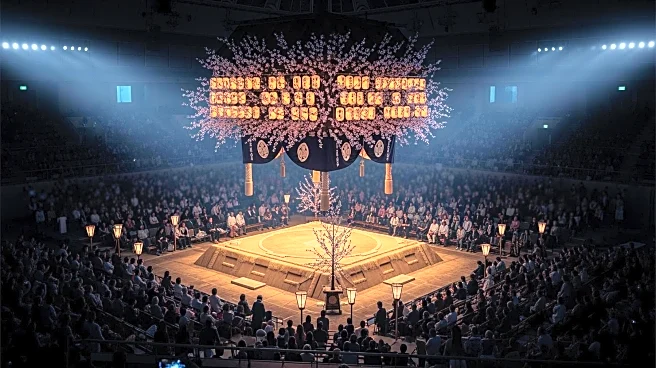What's Happening?
The Grand Sumo Tournament, a prestigious event showcasing the ancient Japanese sport of sumo wrestling, is being held at the Royal Albert Hall in London. This marks only the second time the tournament
has visited the city, with the first occurrence in 1991. The event features 40 top sumo wrestlers, known as rikishi, performing traditional rituals and matches under a six-tonne Japanese temple roof. Despite sumo's deep-rooted traditions, modern technology plays a significant role, with a large LED screen providing stats and replays to the audience. The tournament has attracted fans from around the world, many of whom discovered sumo through online platforms and social media.
Why It's Important?
The London Grand Sumo Tournament highlights the global appeal and cultural significance of sumo wrestling, a sport traditionally confined to Japan. By hosting the event in London, organizers are expanding sumo's reach and engaging international audiences. This move is crucial for the sport's growth, especially as it faces challenges such as declining interest among Japanese youth and competition from other sports. The event also underscores the role of digital media in promoting traditional sports, as many fans have been introduced to sumo through online videos and communities. This blend of tradition and modernity could help sustain sumo's popularity in a rapidly changing world.
What's Next?
The success of the London tournament may encourage further international events, potentially increasing sumo's global fanbase. Organizers might consider leveraging digital platforms more extensively to engage younger audiences and counteract declining domestic interest. Additionally, addressing issues such as recruitment challenges and the sport's image problems, including past scandals, will be crucial for its long-term viability. The Japanese Sumo Association may also need to reconsider its restrictions on foreign rikishi to maintain competitive diversity and appeal.
Beyond the Headlines
The tournament's international expansion raises questions about cultural preservation versus globalization. While bringing sumo to a global audience can enhance cultural exchange, it also risks diluting traditional practices. Balancing these aspects will be key to maintaining sumo's authenticity while adapting to modern expectations. Furthermore, the sport's reliance on digital engagement highlights the broader trend of traditional activities adapting to the digital age, which could serve as a model for other cultural practices seeking to remain relevant.





